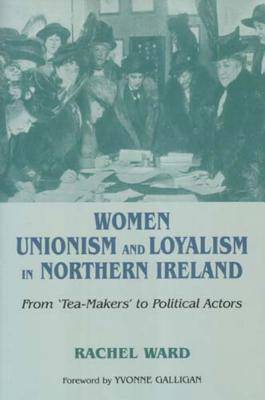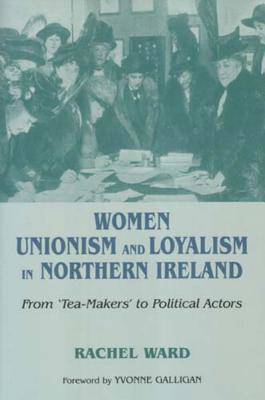
- Afhalen na 1 uur in een winkel met voorraad
- Gratis thuislevering in België vanaf € 30
- Ruim aanbod met 7 miljoen producten
- Afhalen na 1 uur in een winkel met voorraad
- Gratis thuislevering in België vanaf € 30
- Ruim aanbod met 7 miljoen producten
Women, Unionism and Loyalism in Northern Ireland
From Tea-Makers to Political Actors
Rachel Ward
Hardcover | Engels
€ 100,45
+ 200 punten
Omschrijving
Politically active unionist and loyalist women in Northern Ireland are rendered relatively invisible because of the predominantly male public faces of unionism and loyalism. This is evident in the media images of the male-dominated annual parades by organisations such as the Orange Order, statements by mostly male political party spokespersons, and the murals of loyalist paramilitaries that designate territorial possession and seldom depict female involvement. The book seeks to counter the stereotype that unionist and loyalist women 'just make the tea'. The aim of the book is to shed light on the form and extent of unionist and loyalist women's political participation. The research conducted shows that unionist and loyalist women are more active political participants than the tea-making stereotype suggests; they have varied political roles, although these are often invisible. Whilst exploring the national and other cross-cutting identities held by unionist and loyalist women and the motivations behind their political activity, the evidence also suggests that the women have been motivated, at least in part, by their nationalism. However, this approach does not fully explain the form and extent of respondents' political action, apparent from a consideration of comparative figures of women and political participation. The book concludes that a greater synthesis with the literature on gender and political participation is needed.Ã?Â?Ã?Â?
Specificaties
Betrokkenen
- Auteur(s):
- Uitgeverij:
Inhoud
- Aantal bladzijden:
- 196
- Taal:
- Engels
Eigenschappen
- Productcode (EAN):
- 9780716533399
- Verschijningsdatum:
- 1/05/2006
- Uitvoering:
- Hardcover
- Formaat:
- Genaaid
- Afmetingen:
- 171 mm x 241 mm
- Gewicht:
- 449 g

Alleen bij Standaard Boekhandel
+ 200 punten op je klantenkaart van Standaard Boekhandel
Beoordelingen
We publiceren alleen reviews die voldoen aan de voorwaarden voor reviews. Bekijk onze voorwaarden voor reviews.










